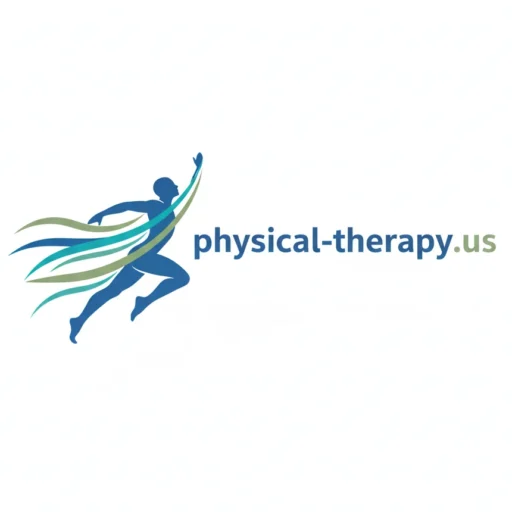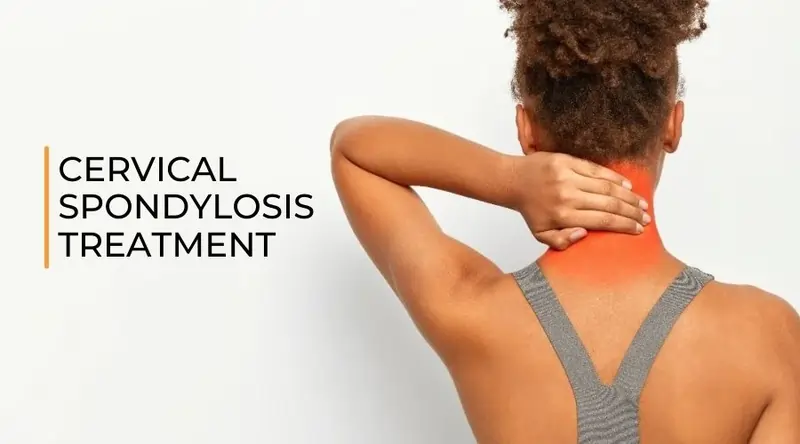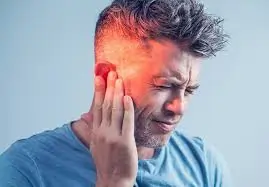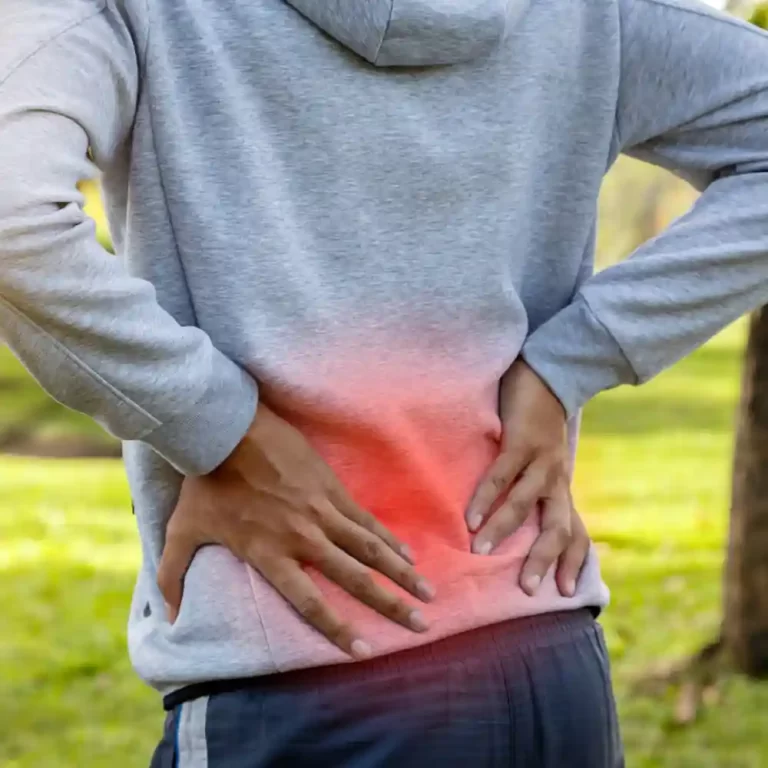How to Cure Cervical Spondylosis Permanently?
Introduction
Cervical spondylosis, also known as neck arthritis, is a degenerative condition affecting the cervical spine due to aging and wear and tear. While it cannot be cured permanently, symptoms can be effectively managed and reduced through physiotherapy, posture correction, regular exercise, lifestyle changes, and, in some cases, medications or surgery.
As we age, we may develop cervical spondylosis, a disorder that affects the neck region of the spine. The wear and tear on the discs between the neck bones causes several symptoms. It is crucial for individuals who are impacted or at risk to comprehend the complexities of this condition and to seek prompt medical attention and properly manage it, since it can significantly influence their quality of life. An overview of cervical spondylosis is provided in this article to assist, including information on its definition, signs, causes, available treatments, and potential side effects. So let’s get started.
Our spines begin to deteriorate and change as we get older. People in their 30s are typically the ones who experience this. About 90% of people have cervical spondylosis by the time they are 60.
Cervical spondylosis: what is it?
 Cervical Spondylosis
Cervical Spondylosis
The gradual degradation of the neck’s spinal disks is a common sign of cervical spondylosis, often known as cervical osteoarthritis or neck arthritis. This degeneration can cause many symptoms that impair neck movement and function over time.
Other names for cervical spondylitis or spondylosis include cervical arthritic or degenerative osteoarthritis. The symptoms worsen with time and age. Even walking may become challenging if cervical spondylitis is not properly and promptly treated.
In older adults, cervical spondylosis is more common. As we age, the strength of our bones and ligaments starts to decline. The discs start to rub against one another as a result of the fluid loss. As the discs continue to degenerate and fluid is lost, abnormal growths known as osteophytes or spurs develop in the neck bones.
Causes of Cervical Spondylosis
Age is the main cause of cervical spondylosis. As we age, the spinal disks gradually deteriorate, lose fluid, and stiffen. Bone spurs may form as a result of this degradation, which may impair joint mobility. Additional contributing elements consist of:
- Degenerative disk disease.
- Herniated disk.
- Osteoarthritis.
- Bone spurs (osteophytes).
- Spinal stenosis.
- Prior neck surgery or injuries.
- Smoking can speed up the spinal disk.
Certain people may be more at risk for cervical spondylosis due to genetic reasons.
Symptoms of Cervical Spondylosis
Typical signs and symptoms include:
- Neck pain and stiffness that can worsen with movement.
- Shoulders or neck muscle spasms.
- Problems with balance or coordination under extreme situations.
Because cervical spondylosis is degenerative, it may be difficult to cure completely, but symptoms can be managed. Particular cervical spondylosis exercises can be quite helpful in reducing symptoms and enhancing quality of life, as we mentioned in our previous post.
Why does cervical spondylosis happen?
Cervical spondylosis develops gradually. Risk factors or triggers include:
- 60 years of age or older.
- Smoking.
- Working on projects that need you to spend hours each day staring up or down.
- Getting cervical spondylosis from a family history.
- Have a history of neck trauma.
How is the diagnosis of cervical spondylosis made?
They might look at your:
- Flexibility of the neck.
- Gait, or the way you walk.
Which tests are used to identify cervical spondylosis?
To obtain detailed images or photos of your spine and to assess the health of your skeletal muscles and nerves, your healthcare professional may perform the following tests. Tests could consist of:
- MRI stands for magnetic resonance imaging. An MRI can assist in identifying regions where nerves may be pinched by creating detailed images using radio waves and a powerful magnetic field.
- Myelography using computed tomography (CT). This type of CT scan involves injecting a dye into the spinal canal to provide additional imaging. The intricacies of the spinal cord, spinal canal, and nerve roots are easier to see with this examination.
- Tests of nerve function. To find out whether nerve signals are reaching your muscles correctly, you might require tests. Tests for nerve function include:
- Electromyography. This exam measures the electrical activity in your nerves as they connect to your muscles, both at rest and during contraction.
- Study of nerve conduction. Above the nerve under study, electrodes are affixed to the skin.
Treatment
To effectively manage cervical spondylosis, a comprehensive approach is necessary. Although there may not be a permanent cure, the aim of treatment is to reduce symptoms while improving quality of life.
A treatment that reduces your symptoms is the finest kind. Conservative, noninvasive techniques are usually used by doctors to treat cervical spondylosis. For instance, they might suggest:
- Physical treatment.
- Over-the-counter medications to ease pain.
- Brace or soft collar.
Exercise and Physical Therapy: Physical therapy, especially exercises for neck spondylitis, is essential for managing cervical spondylosis since it reduces pain and enhances neck function. These exercises can greatly strengthen neck muscles, enhance posture, and increase flexibility, as we covered in our earlier piece on cervical spondylosis exercises. Exercise programs that are specifically designed to address the causes of cervical pain can be made to fit each person’s needs.
Options for Medication: The management approach frequently includes medication. Pain and inflammation are treated with a range of drugs, including prescription drugs and over-the-counter painkillers. To choose the best pharmaceutical plan, taking into account the patient’s symptoms, medical history, and other health considerations, it is essential to speak with healthcare professionals.
Lifestyle Modifications: Lifestyle modifications can have a major impact on the possibility of curing cervical spondylosis. Simple lifestyle changes, such as utilizing ergonomic furniture, taking frequent breaks from prolonged sitting, avoiding neck-straining activities, and maintaining proper posture, can help control symptoms.
Advanced Treatment Options
It’s important to take into account cutting-edge therapy options for more severe cases or in situations when conventional therapies are insufficient, as we explore in greater detail in How to Cure Cervical Spondylosis Permanently. The treatment of cervical spondylosis may be greatly impacted by these cutting-edge techniques.
Surgical Interventions: Usually reserved for extreme cases, surgery becomes necessary when there is proof of spinal cord or nerve root compression. The goal of procedures like spinal fusion and decompression surgery is to stabilize the spine and release this pressure. Before moving further, it is essential to consider the advantages and disadvantages by speaking with a spine specialist.
Non-invasive Treatments: Advances in technology have made non-invasive alternatives such as cervical traction and transcutaneous electrical nerve stimulation (TENS) possible. Patients looking for solutions outside of conventional medical treatments will particularly benefit from these alternatives.
These injections, which are given into facet joints or around nerve roots, can ease pain and inflammation. Their efficacy varies, though, and they are usually suggested following a careful analysis.
The most common remedies for neck pain are as follows:
Medial branch block and radiofrequency ablation. Some people with persistent neck pain undergo this treatment. Your doctor might have identified the cause of your neck pain if it has subsided. Blocking the pain more permanently might be the next course of action. This is accomplished by using a burning method known as radiofrequency ablation to damage the nerves supplying the joint. After an ablation, pain usually subsides for a few months. Pain may return, though, if the nerve regenerates (heals).
The Role of Alternative Therapies
Investigating alternative therapies provides more options for managing and relieving cervical spondylosis, enhancing traditional treatments with a comprehensive strategy.
- Acupuncture: This age-old method increases blood flow and activates the body’s natural painkillers, which may help people with cervical spondylosis feel less pain and relax their muscles.
- Chiropractic Care: A qualified chiropractor’s adjustments can occasionally reduce pain, increase range of motion, and strengthen the spine. Chiropractic care must be approached carefully, particularly when it comes to spinal disorders.
- The goals of yoga and pilates are to strengthen, balance, and stretch the body. They can be very helpful, enhancing neck strength, flexibility, and posture while providing a therapeutic complement to conventional therapy regimens.
- Massage therapy can lessen the pain and stiffness in the neck, encourage relaxation, ease tense muscles, and improve blood flow to the affected areas.
Keep in mind that alternative therapies need to supplement traditional treatments rather than take their place. Before beginning any new therapy, speaking with medical professionals guarantees its appropriateness and safety.
Long-term Management and Coping Strategies
Improving living quality and reducing the everyday effects of cervical spondylosis require long-term care and coping mechanisms.
- Frequent Exercise and Physical Activity: It’s important to follow an exercise regimen that includes both general physical activity and targeted neck workouts. It aids in symptom management and stops further decline.
- Ergonomic Workspaces: For people who spend a lot of time at a desk, an ergonomic arrangement might lessen neck pain.
- Stress management: Methods such as mindfulness, meditation, and deep breathing can help reduce stress, which can make the symptoms of cervical spondylosis worse.
- Nutrition and Diet: Bone health is supported by a well-balanced diet high in calcium and vitamin D.
- Education and Support: Attending support groups and keeping up with the illness and its treatments can be empowering and offer much-needed emotional support.
- Frequent Medical Checkups: Constant communication with medical professionals guarantees appropriate condition monitoring and any required treatment plan modifications.
Cervical spondylosis may not have a permanent cure, but these methods can greatly lessen symptoms and enhance general quality of life.
Self care
Mild cervical spondylosis may react to:
- Frequent physical activity. Even if you must temporarily alter parts of your routines due to neck pain, being active will hasten your recuperation. Daily walkers are less prone to suffer from low back and neck pain.
- You can purchase painkillers without a prescription. Naproxen sodium (Aleve), ibuprofen, or acetaminophen are frequently used to treat cervical spondylosis pain.
- Ice or heat. Sore neck muscles can be relieved by applying heat or ice to the area.
- A gentle neck brace. They serve as an additional resource in treatment regimens that frequently include a range of minimally invasive techniques.
How to Permanently Treat Cervical Spondylosis at Home
Physical therapy
Your physician might suggest that you see a physical therapist for treatment. This aids in muscular strengthening and pain relief. You might be suffering from neck traction. Weights are utilized in this approach to increase the distance between the cervical joints and reduce the strain on the discs and nerve roots.
Neck stretching and strengthening exercises
The following exercises can be performed at home to lessen the pain associated with cervical spondylosis:
Neck tilts
Tuck your chin into your chest slowly. It should feel like your neck’s back muscles are stretched. For five seconds, hold this position. As long as it feels comfortable, repeat this five to ten times.
Side-to-side neck tilts
 Side-to-side neck tilts
Side-to-side neck tilts
Turn your head forward toward your shoulder now. The muscles in the neck become stiff. For five seconds, hold this position. Additionally, giving the other shoulder a tip. You are allowed to do five reps on each side.
Neck turn
 Neck turn
Neck turn
Take a seat in a sturdy chair. Once you have turned as far as you can, hold that position for 10 to 20 seconds. The neck turn exercise should be repeated on the left side. On each side, you can complete ten repetitions.
Using both heat and cold therapy
 Using-both-heat-and-cold-therapy
Using-both-heat-and-cold-therapy
Another way to lessen pain is to apply hot and cold compresses alternately to the neck area. Hot compresses will improve blood circulation, while cold compresses can reduce swelling and irritation. Wrap a little piece of cloth or a towel around a hot water bag to use it as a hot compress. Remove them from the impacted region after a brief length of time. If you switch up the procedures, you’ll see a difference.
Massage therapy
 Massage therapy
Massage therapy
Muscle tightness is a symptom of cervical spondylosis. Select a massage therapist with expertise in treating cervical spondylosis, and schedule regular sessions with them. Massage therapy can help your neck muscles become more flexible again.
Use of Ergonomic Products
 Cervical-Pillow
Cervical-Pillow
The task chairs you use at your desk or home office may have a beneficial or negative effect on the health of your spine. Determine that your equipment and body are positioned to maintain a neutral spinal alignment to provide sufficient back support from the base of your spine to your head. This means that excessive bending or rounding in the upper back (kyphosis) and curvature in the lower back (lordosis or swayback) should be avoided.
Proper Posture
 Proper Posture
Proper Posture
Poor posture is exemplified by sitting with the head slanted forward, which is a common practice when using a computer for work. The pain from cervical spondylosis might be worsened by poor posture. Maintaining proper posture, with the shoulders relaxed and the neck straight, can help ease some of the pain related to this condition and lessen the strain on the cervical spine.
Tuck your chin in gently and level your ears with your shoulders to prevent a forward head posture. This can reduce strain on your neck and help you keep your head level over your shoulders. Maintaining proper posture will help you get rid of your neck pain once and for all.
Maintaining a Healthy Diet
 Balanced diet
Balanced diet
- The patient’s four daily meals must include milk, raw vegetables, whole-wheat bread, sprouts, and a salad. Consuming calcium, phosphorus, vitamin D, and vitamin C is also advantageous.
- Fruits and vegetables. Fruits and vegetables high in vitamin C and A help prevent inflammation by neutralizing free radicals, which in turn lessen painful neck swelling.
- Omega-3 fatty acids, found in abundance in nuts, oil seeds, and seafood, reduce inflammation.
- Anti-inflammatory properties are also found in apples, garlic, ginger, and turmeric.
The 100% natural neuropathy therapy offered at the Spanish Spondylosis Care Center is the best choice if the pain doesn’t go away even after trying at-home treatments.
Complications
- Spinal stenosis: You may get spinal stenosis if you neglect to treat cervical spondylosis for an extended period. If the spinal cord steadily narrows, it can cause serious harm. Cervical spondylitis may lead to lumbar spondylosis.
- Nerve compression: The spinal nerves are constantly under pressure when you have cervical spondylosis. You may have spinal radiculopathy.
- Radiculopathy. Loss of bodily coordination is another possibility.
- Permanent disability: If cervical spondylitis symptoms are not treated, your spinal cord may sustain irreversible damage. Cervical myelopathy and cervical radiculopathy can worsen. Surgery is the only option when day-to-day tasks become challenging.
Precautions
The most important thing is to take measures. A few easy safety measures are:
- Maintaining proper posture is essential. Both standing and sitting should be done with the neck and spine straight.
- Regular exercise is a good idea, but follow your doctor’s advice.
- Vital vitamins, minerals, and fiber are provided by a balanced diet full of fruits, vegetables, whole grains, lean meat, and healthy fats. In addition to helping your body work at its best, this can make you feel fuller on fewer calories, which lowers the chance that you will overeat.
- You can control how many calories you consume by eating a balanced diet.
- Learning how to lift properly will help you avoid straining your shoulders, arms, and neck.
Conclusion
We’ve covered several management-related topics in our thorough examination of How to Cure Cervical Spondylosis Permanently. Although there is no permanent cure because it is degenerative, effective management and symptom reduction are possible.
We have emphasized the significance of a comprehensive strategy that includes medication, lifestyle changes, physical therapy, and, in extreme situations, surgery. It has also been emphasized how complementary alternative therapies like massage therapy, yoga, chiropractic adjustments, and acupuncture are.
Improving the quality of life for people with cervical spondylosis requires important long-term management techniques, such as consistent exercise, ergonomic modifications, stress reduction, a healthy diet, support networks, and routine examinations with the doctor.
Cervical spondylosis management is a very personal path. Despite this illness, it is possible to have a comfortable and active life with the correct combination of medications and lifestyle modifications.
FAQs
What is the etiology of cervical spondylosis?
A common age-related disorder called cervical spondylosis causes the neck’s spinal disks to gradually deteriorate. Although aging is the main cause of this disorder, other factors that may contribute to its development include smoking, prior injuries, repetitive neck strains, and genetic predispositions.
Is it possible to cure cervical spondylosis completely?
Because cervical spondylosis is degenerative, there is no known cure, but there are several treatments that can greatly reduce symptoms and enhance quality of life. Physical therapy, medication, lifestyle changes, and, in extreme situations, surgery are all examples of management techniques.
Does cervical spondylosis respond well to alternative therapies?
Yes, Complementary therapies, including massage, yoga, chiropractic adjustments, and acupuncture, can be used in addition to conventional treatments. These therapies can improve flexibility, lessen pain, and enhance overall well-being. They should be used in addition to traditional medical treatments, not in place of them.
Is there a lasting cure for cervical spondylosis?
The neck degeneration condition known as cervical spondylosis is generally not thought to be curable in the sense that it can be reversed. Nonetheless, a variety of therapies, such as physical therapy, medication, and lifestyle modifications, are frequently used to effectively manage it. Even if the underlying deterioration continues, these treatments can greatly reduce symptoms and enhance quality of life.
How can I get rid of cervical pain for good?
Steroid injections: An injection placed near the nerve roots might lessen inflammation and pain. Alternative therapies: To help ease your pain, your doctor might suggest massage or acupuncture to release tense muscles. A chiropractor or osteopath might be able to help you correct your spine.
In cervical spondylosis, how should one sleep?
If you have cervical spondylosis, you should use a supportive pillow, keep your spine in the right alignment, and pick a comfortable sleeping posture. In general, sleeping on one’s back or side is advised, and a medium-firm mattress may be useful.
Which exercises are most effective for cervical spondylosis?
Combining strengthening and stretching activities with an emphasis on the neck and shoulder muscles is the “best” exercise for cervical spondylosis. It is frequently advised to perform scapular squeezes, isometric presses, neck retractions, and chin tucks. These exercises strengthen the neck muscles, increase range of motion, and lessen stiffness.
What are cervical spondylosis’s most severe symptoms?
Cervical spondylosis can cause severe neck pain that spreads to the arms and shoulders, weakness or numbness in the arms and hands, trouble walking or keeping balance, and loss of bladder or bowel control. Patients may occasionally also feel tingly, have pins-and-needles feelings, or even lose their ability to coordinate.
For cervical spondylosis, which physician is the best?
The best medical professionals to consult for cervical spondylosis are physical therapists, neurologists, neurosurgeons, or orthopedic surgeons. Nerve-related problems are the attention of neurologists and neurosurgeons, and if nerve compression is a cause, it might be required. The musculoskeletal system, which includes the spine, is the specialty of orthopedic surgeons. Through exercises and other therapies, physical therapists can assist with pain management and rehabilitation.
What is the best medication for spondylosis of the cervical region?
A healthcare practitioner can best decide the optimal medication for cervical spondylosis based on the severity of your symptoms. Commonly given treatments include muscle relaxants (like cyclobenzaprine) for muscular spasms, NSAIDs (like ibuprofen or naproxen) for pain and inflammation, and, in certain situations, harsher painkillers (such as narcotics or anti-epileptic medications) for nerve pain. Steroid injections are another possibility for reducing inflammation.
Reference
- Editorial Team. (2023, November 30). How to Cure Cervical spondylosis Permanently: Effective treatment and insights – Heritage Hospitals. Heritage Hospitals. https://heritagehospitals.com/blog/how-to-cure-cervical-spondylosis-permanently/
- Spandan Spondylosis Care Centre. (2023, April 25). How to cure cervical spondylosis at home 2023 – Effective home remedies. Spandan Spondylosis Care Center -. https://spandanspondylosis.com/cure-cervical-spondylosis-permanently-at-home/
- Cervical spondylosis. (2025, June 2). Cleveland Clinic. https://my.clevelandclinic.org/health/diseases/17685-cervical-spondylosis
- Cervical spondylosis – Diagnosis & treatment – Mayo Clinic. (2023, December 20). Mayo Clinic. https://www.mayoclinic.org/diseases-conditions/cervical-spondylosis/diagnosis-treatment/drc-20370792
- Cervical spondylosis (Arthritis of the neck) – OrthoInfo – AAOS. (n.d.). https://orthoinfo.aaos.org/en/diseases–conditions/cervical-spondylosis-arthritis-of-the-neck/
- Cervical spondylitis : Causes, symptoms, treatment, and FAQ’s. (2025, April 25). Apollo Hospitals. https://www.apollohospitals.com/







